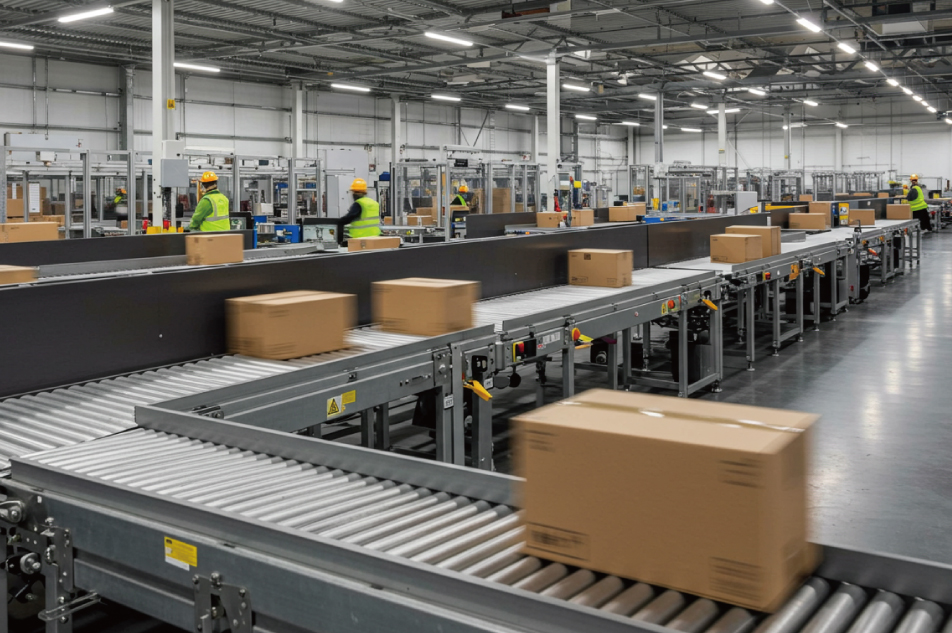The Difference Between Static Storage & Dynamic Storage

What Is Dynamic Storage?
Dynamic storage is a flexible and fluid system where products do not have predetermined or fixed storage locations. Instead, they are placed in available spaces based on demand, frequency of use, or other criteria that align with the warehouse's operational goals. This system enables warehouses to store products efficiently, reducing travel time and optimizing shelf space.
Key Features of Dynamic Storage:
- Flexibility: Products can be moved to any available location, with higher-demand products positioned closer to packing areas.
- Demand-based Storage: Frequently ordered products are stored for easier access, while slower-moving items are shifted to less accessible areas.
- Maximized Space Utilization: The system allows for more products to be stored in a single area, as inventory levels change and space is reassigned dynamically.
Benefits of Dynamic Storage:
- Improved Efficiency: Workers spend less time picking high-demand products when they are located close to the packing areas.
- Better Space Utilization: Unlike static systems, dynamic storage fills empty spaces with products that need storage, ensuring no shelf space goes unused.
- Adaptability to Changing Demand: As products fluctuate in popularity or inventory levels, dynamic storage allows for continual adjustments.
Challenges of Dynamic Storage:
- Training Requirements: Workers need continuous training due to the ever-shifting product locations, leading to longer onboarding times.
- Potential for Disorganization: If not managed carefully, dynamic storage can lead to confusion or misplaced inventory.
What Is Static Storage?
Static storage involves a rigid system where each product has a specific, dedicated space in the warehouse. This system provides consistency, making it easy for workers to locate products as they are always found in the same location. It is often used in warehouses where inventory does not change frequently, such as for long-term storage or infrequently moved products.
Key Features of Static Storage:
- Fixed Locations: Every product has a designated spot that remains unchanged regardless of inventory fluctuations.
- Simplified Picking Process: Workers can retrieve products faster, knowing their exact location.
- Consistency and Predictability: Less need for frequent updates or layout changes makes training simpler and reduces errors.
Benefits of Static Storage:
- Ease of Use: Static storage simplifies warehouse management, particularly for warehouses where products don't frequently change.
- Reduced Errors: Workers are less likely to misplace or lose items as locations remain constant.
- Ideal for Long-Term Storage: Suitable for warehouses where items don't need frequent picking.
Challenges of Static Storage:
- Wasted Space: When inventory drops, dedicated shelf space remains empty, leading to inefficient use of space.
- Inflexibility: Static storage lacks adaptability, making it unsuitable for fluctuating product demand or changing inventory levels.
Dynamic Storage vs. Static Storage: A Direct Comparison
1. Flexibility:
- Dynamic Storage: Greater flexibility, allowing products to move freely based on demand or space availability. Ideal for warehouses with fluctuating product demand or changing inventory levels.
- Static Storage: More rigid, with fixed locations. Suitable for long-term inventory but less adaptable when product volumes change rapidly.
2. Space Utilization:
- Dynamic Storage: Excels in space utilization by filling gaps with available products, maximizing warehouse capacity.
- Static Storage: May result in wasted space, especially when inventory levels fluctuate, leaving empty shelves.
3. Efficiency:
- Dynamic Storage: Enhances efficiency in picking and packing operations, particularly for high-demand items. Popular items are placed near packing areas for faster retrieval.
- Static Storage: Efficient for less dynamic warehouses, where picking isn't a daily activity. Easier to locate products but less adaptable during demand spikes.
4. Inventory Management:
- Dynamic Storage: Can be challenging for inventory tracking due to frequent product movement. A robust WMS is necessary to prevent inefficiencies.
- Static Storage: Simplifies inventory management as items are always in the same place, making stock monitoring and replenishment easier.
When to Use Dynamic Storage
Dynamic storage is best for warehouses handling large order volumes that require optimized picking efficiency. It is ideal for fulfillment centers and environments where product demand fluctuates regularly. By adjusting to store popular items in optimal locations, it reduces retrieval times and increases productivity.
When to Use Static Storage
Static storage works well for long-term storage or warehouses with infrequent inventory changes. It is ideal for companies managing large, bulky items or rarely shifted inventory, as it simplifies operations, reduces errors, and shortens training times.
Hybrid Approach: Combining Static and Dynamic Storage
Many warehouses benefit from combining both systems. For instance, static storage can house large or slow-moving items, while dynamic storage is used for frequently picked products. This hybrid approach maximizes both space utilization and operational efficiency.
Conclusion
Choosing between dynamic and static storage depends on your warehouse's operational needs. Dynamic storage is ideal for fast-paced environments requiring efficiency and flexibility, while static storage suits predictable, long-term storage needs.
If you would like to know which kind of storage solution works better in your warehouse, plan a consultation and get a quote now . Our team of experts is ready to be at your service.
Do you need more information?
Our team of experts will be happy to help you with any questions you may have.
More information